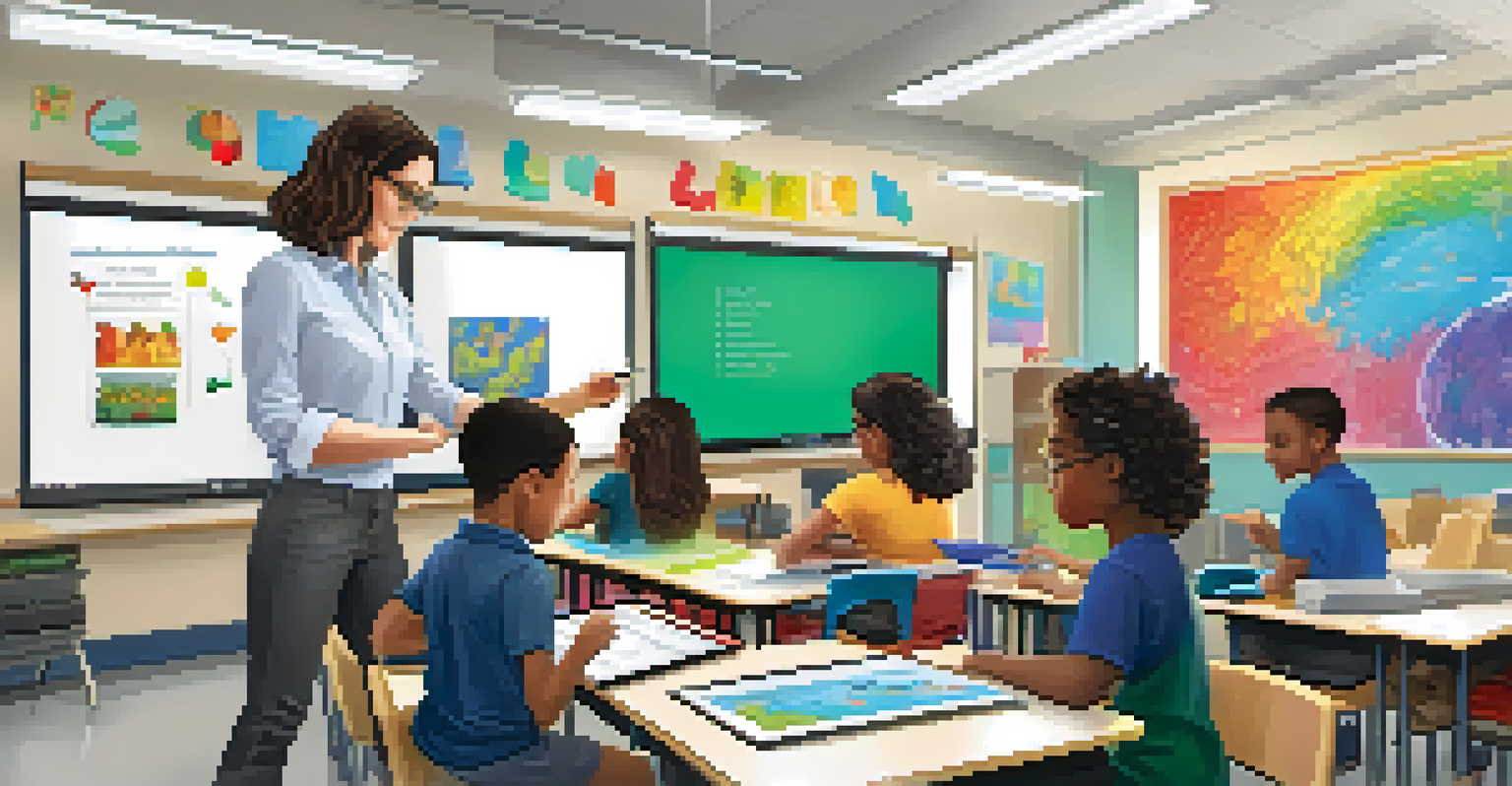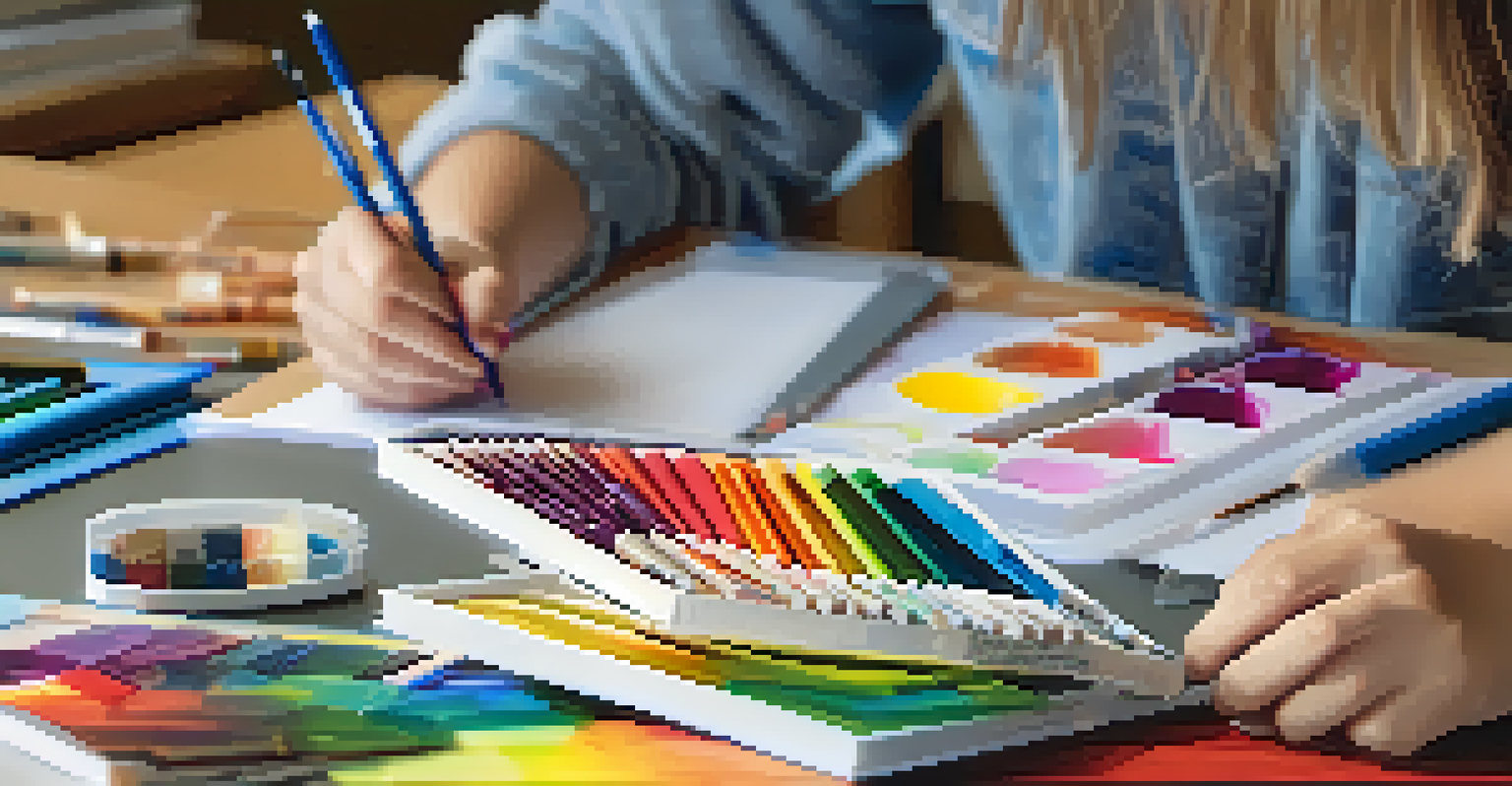Navigating the Transition to Personalized Learning Models

Understanding Personalized Learning: What It Is and Why It Matters
Personalized learning tailors educational experiences to meet individual student needs. Rather than a one-size-fits-all approach, it focuses on each learner's unique strengths, interests, and pace. This model fosters deeper engagement and ownership of learning, making education more relevant and effective.
Personalized learning is not just about the technology; it’s about understanding the unique needs of each student and empowering them to take charge of their own learning journey.
As education evolves, the demand for personalized learning is increasing. Students today are more diverse in their learning styles and backgrounds, necessitating a shift from traditional methods. By recognizing and addressing these differences, educators can create a more inclusive environment that promotes success for all students.
Imagine a classroom where each student is working on projects that excite them while still meeting curriculum standards. This is the essence of personalized learning. It not only emphasizes academic growth but also cultivates a love for learning, preparing students for future challenges in a rapidly changing world.
Key Challenges in Transitioning to Personalized Learning Models
Transitioning to personalized learning can be daunting for educators and institutions. One significant challenge is the need to shift mindsets from traditional teaching methods to a more flexible approach. This change often requires extensive training and support for teachers, as they must adapt to new roles as facilitators rather than mere transmitters of information.

Another hurdle is the integration of technology into the learning process. While technology can enhance personalized learning, it also requires resources, training, and reliable infrastructure. Schools must ensure that all students have equitable access to technology to avoid widening the achievement gap.
Personalized Learning Enhances Engagement
Personalized learning tailors education to individual student needs, fostering deeper engagement and ownership of their learning.
Finally, measuring success in personalized learning environments can be tricky. Traditional metrics often fall short in capturing the nuances of individual progress. Educators must develop new assessment methods that reflect the diverse pathways students may take, ensuring that each child's growth is recognized and celebrated.
Creating a Supportive Environment for Personalized Learning
A supportive environment is vital for successful personalized learning. This begins with fostering a culture of trust and collaboration among educators, students, and parents. When everyone is on board, it creates a community that values individual growth and innovation in teaching practices.
Education is not the filling of a pail, but the lighting of a fire.
Physical spaces also play a crucial role. Classrooms should be designed to facilitate various learning activities, from group projects to independent study. Flexible seating arrangements and access to resources can empower students to take charge of their learning journey.
Lastly, ongoing professional development is essential. Teachers need continuous training and resources to effectively implement personalized learning strategies. By investing in staff development, schools can ensure that educators feel confident and equipped to meet the diverse needs of their students.
Leveraging Technology for Personalized Learning Success
Technology is a powerful ally in the journey toward personalized learning. It can provide students with access to a wealth of resources, enabling them to explore topics that interest them at their own pace. Online platforms, educational apps, and digital tools can all facilitate personalized experiences tailored to individual needs.
Moreover, data analytics can help educators track student progress and identify areas where they may need additional support. By analyzing learning patterns, teachers can make informed decisions about instruction and intervention, ensuring that no student falls behind.
Challenges in Implementing Models
Transitioning to personalized learning faces challenges such as shifting traditional mindsets, integrating technology, and developing new assessment methods.
However, it's crucial to strike a balance between technology use and traditional teaching methods. While technology enhances learning, human interaction and guidance remain irreplaceable. Teachers play a vital role in helping students navigate their personalized learning paths, providing support and encouragement along the way.
Engaging Students in Their Learning Experience
Engagement is at the heart of personalized learning. When students have a say in their learning, they are more likely to be invested in the outcome. Providing choices in projects, topics, or assessment methods can empower students and make learning more meaningful.
Incorporating student feedback into the learning process is also essential. Regular check-ins and reflections can help educators understand what works and what doesn't for each student. By listening to their voices, teachers can adjust their approaches to better serve their learners.
Additionally, fostering a growth mindset is crucial. Encouraging students to embrace challenges and learn from failures can instill resilience and a lifelong love for learning. When students see setbacks as opportunities for growth, they are more likely to engage fully in their personalized learning journeys.
Fostering Collaboration Among Educators and Stakeholders
Collaboration among educators is essential for successful personalized learning implementation. By working together, teachers can share strategies, resources, and insights that enhance the learning experience. Collaborative planning sessions can also help ensure that all educators are aligned in their goals and approaches.
Involving parents and the wider community can further enrich the personalized learning environment. Schools can host workshops and informational sessions to engage families in the process, helping them understand how they can support their children's learning at home.
Collaboration Boosts Learning Success
Collaboration among educators, parents, and the community enriches personalized learning environments and supports student growth.
Lastly, partnerships with organizations and businesses can provide additional resources and opportunities for students. Collaborating with external stakeholders can expose learners to real-world applications of their studies, making the learning experience even more relevant and engaging.
Measuring Success in Personalized Learning Models
Measuring success in personalized learning requires a shift in how we assess student progress. Traditional standardized tests may not fully capture the growth and achievements of each learner. Instead, a combination of formative assessments, portfolios, and self-assessments can provide a more holistic view of student success.
Regular progress monitoring is crucial. Educators should track student development through various metrics, such as project completion, skill mastery, and student reflections. This data can inform instructional decisions and help educators adjust their strategies to better meet individual needs.

Finally, celebrating successes—big and small—is essential in a personalized learning environment. Recognizing student achievements fosters motivation and reinforces the value of their unique learning journeys. When students feel acknowledged for their efforts, they are more likely to remain engaged and excited about their education.